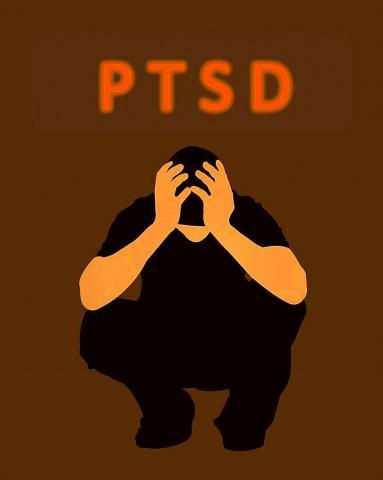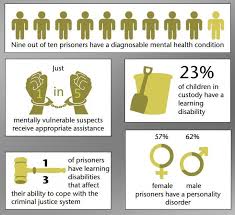
Returning Citizens and Post Traumatic Stress
- heavensentorg1

- Dec 16, 2022
- 4 min read
Updated: Apr 11, 2023
Current inmates of the prison system, as well as returning citizens, have a statistically much higher risk for acquiring post-traumatic stress disorder (PTSD), approximately between 4% to 21%, according to a study sample. It also showed that women are more likely to experience PTSD than other populations. PTSD is a component of post-incarceration syndrome.
What is PTSD, and why does this matter?
Post-traumatic stress disorder may occur when someone experiences through viewing or participating in a traumatic event(s) or a traumatic set of conditions. Characterized by prolonged intense feelings and disturbing thoughts related to the traumatic event, PTSD alters the ability to cope with day-to-day life. For example, reliving the event through flashbacks, nightmares, intense anger, fear or sadness, and detachment. The categories of PTSD symptoms are:
Alterations in mood: Many will experience significant sadness, fear, anger, guilt, horror, or shame. It is an often occurrence that they will find themselves losing interest in activities that they previously enjoyed or being unable to experience happy or positive emotions.
Avoidance: Many individuals with PTSD will avoid triggers of the event, such as people, places, events, things, and activities. They are also likely to avoid discussing the event, including their feelings.
Changes in cognition: Some persons will experience alterations in memory, especially relating to the traumatic event(s). They may have distorted beliefs about themselves or others (“I cannot trust anyone,” “I am terrible”), including inaccurately blaming themselves or others. They also may experience problems with concentration and may develop sleeping issues.
Differing reactions: People with PTSD may be irritable or prone to having angry outbursts. They may engage in destructive behaviors, be overly aware of persons and details, be suspicious, and be easily startled.
Intrusive thoughts: PTSD often causes repetitious memories that are involuntary. These may include disturbing dreams and flashbacks. Flashbacks may be so lucid that the person may believe they are in their traumatic experience again.
PTSD is associated with higher re-incarceration. In addition, first-time offenders often have existing traumatic experiences, especially in childhood, and mental health issues. What does this mean for the prison population? A significant component in criminal offenses is the person’s mental well-being. Access to mental well-being resources is paramount in rehabilitating returning citizens and preventing incarceration.
Trauma
During incarceration, prisoners experience many traumas due to the dehumanizing environment that removes love and care. There is violence, rigid discipline, sexual assault, and isolation, amongst other potential traumas. Many form obsessive behaviors in awareness and vigilance due to the prison environment that follows them after release. Those without an external support system are at a greater risk of going without the treatment that can aid in successful reentry into civilian life.
Treating PTSD
Reaching out for help improves the quality of life for individuals released from prison. In addition, developing coping skills to deal with issues they may be facing will increase their ability to meet each day with hope.
There are many avenues for treatment for PTSD:
Alternative therapies may be beneficial to individuals with PTSD. These therapies include service or emotional support animals, yoga, and acupuncture, amongst others. Combining treatments are common and often helpful.
Cognitive Processing Therapy focuses on changing negative emotions (such as guilt, shame, etc.) and beliefs (such as “I can’t trust anyone”) due to the trauma. Therapists help the person confront disturbing memories, thoughts, and emotions.
Eye Movement Desensitization and Reprocessing Therapy (EMDR) is a trauma-focused psychotherapy that allows a person to reclaim the memory of the trauma, allowing them to experience it differently. It recreates eye movements like those in REM sleep. The individual may experience changes in images, thoughts, and feelings. Over time, with consistent treatment, the memory tends to change and is experienced less harmfully.
Group therapy encourages survivors of traumatic events to share their experiences, feelings, and reactions in a non-judgmental setting. Group members aid one another in realizing that many people would have felt and reacted the same way. Family therapy may also be beneficial because the behavior of the person with PTSD may affect the family unit.
Medication Some antidepressants may be used to treat the core symptoms of PTSD. Persons with PSTD may find relief from other symptoms from other drugs.
Prolonged Exposure Therapy is repetitive and progressive exposures to “triggers” and detailed imagining of the trauma in a safe space to aid in gaining control over the fear and distress and learning how to cope.
Trauma-Focused Cognitive Behavioral Therapy integrates trauma-sensitive interventions with cognitive behavioral and humanistic principles and techniques.
Other things that may improve symptoms include mindfulness, journaling, drawing, relaxing, exercising, talking, and breathing exercises.
Getting Help
There are resources available to get help if someone you love or you suffer from post-incarceration PTSD. For example, there is an organization with many online resources committed to helping people who are returning citizens called Heaven Sent 2nd Chance Safehouse,inc. Go to their website at https://www.hs2ct.org/resources.
You can also call or text 998 For the National Suicide and Crisis Lifeline. They will provide you with compassionate and confidential assistance and will be able to find resources available that are local to you.
By S. Kettlety, RN
References:
Feel free to leave a comment we would love to hear from you.







Comments